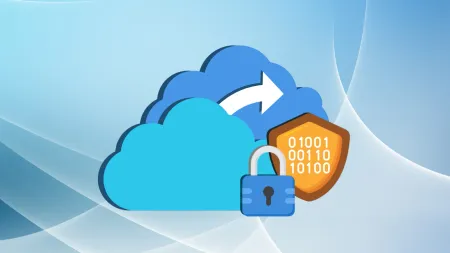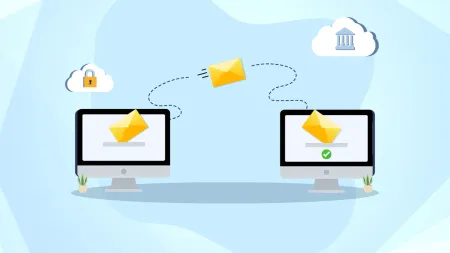Litigation Holds 101: Understanding the Litigation Hold Process in Office 365
The business world is constantly chasing compliance With an everevolving litigation system and an increasing number of regulatory bodies prepared t...

The business world is constantly chasing compliance. With an ever-evolving litigation system, and an increasing number of regulatory bodies prepared to pounce on any mistake, understanding how to protect your business from potential punitive damages is critical. Legal professionals within any industry should thoroughly understand the litigation hold process, which can help shield their business against regulation and litigation.
Today, we’re going to take a look at what litigation holds are, how they work, and how you can use Office 365 during the process.
What is a Litigation Hold?
A litigation hold (or legal hold) is the process of alerting employees to refrain from deleting electronically stored information (ESI) or physical paper copy that pertains to an ongoing (or potential) litigation. Typically, the process for alerting employees is both overarching and granular, and organizations are responsible for developing their own litigation hold process. Some businesses hire an entire legal team who are responsible for the litigation hold process — this is especially true for large businesses who have many potential litigations on the horizon.
The legal hold process may seem intimidating at first, especially for larger businesses who are dealing with hundreds, if not thousands, of different actors who could be in possession of ESI pertaining to the litigation. This issue is further amplified by the multiplicity of disputes that large businesses can face, which they have to deal with on a fractured and individual basis.
Litigation Hold Issues
When it comes to litigation holds, friction related to employee participation, document loss, and notification errors can often overwhelm legal teams, who are often dealing with issues outside of the litigation hold process. There are plenty of issues that can arise during the legal hold process.
- What happens if an employee accidentally deletes ESI related to the litigation process?
- What do you do if your legal team leaves out a key employee in the litigation hold?
- What happens if an employee leaves the company or changes roles during this time?
These issues are almost immediately resolved when the correct document archiving system is put into place — which helps eliminate eDiscovery damages due to employee error.
Document Archiving Solutions
 There are two primary ways that organizations deal with email storage: email journaling and archiving.
There are two primary ways that organizations deal with email storage: email journaling and archiving.
Journaling
Journaling is a method of archiving that helps organizations keep track of critical communications. The email journaling process will copy all email communications in an organization and store them in another mailbox, which creates an ongoing log of all employee emails. Of course, there are problems with email journaling. First, logging all of these emails in a separate mailbox on-site can consume a significant amount of memory and cause disruptions in servers (lag, interruptions, etc.).
There’s also the issue of granularity. Since email journaling options can typically be segmented on a granular basis, confusions and data loss can arise due to human error and process confusion. It’s also important to understand that journaling can only store information in emails, which leaves crucial contact and calendar data storage-less.
Finally, using an email journaling service either on the cloud or on a provider’s physical server can lead to corruption issues. Since these emails are being encrypted and transferred to a separate server, emails can easily become corrupted, opened, or lost in the process. Due to these issues, most companies are moving towards email archiving services, such as those natively included within Office 365.
Please note: It’s important that your eDiscovery process has multiple layers of security. So, implementing automatic backups along with email archiving (and potentially email journaling) can give you a significant amount of document-loss coverage.
Pros
- Easy to implement
- Can be effective for email storage
Cons
- Only starts storing emails once activated
- Doesn’t protect critical data elements (IM, contacts, calendar, etc.)
- Does not maintain email structure
- Can be slow and painful to filter and search
- Can bog down your system
- Corruption potential
Archiving
Archiving is similar to journaling, but it leverages your email providers data storage and uses tiered systems to store critical data and less-critical data separately. By utilizing Office 365s archiving solutions, you can backup emails, contacts, and calendar data, giving you more significant legal coverage. Since email archiving stores communications by date, it’s easy to sift through and recover key conversations. Here is a video that describes the difference between archiving and journaling.
Pros
- Native in Office 365
- Easy-to-use and search
- Cost effective to deploy
- Stores all critical communication elements
- Can be segmented granularly without losing data (high-end server vs. low-cost server)
Cons
- Difficult to deploy outside of Office 365 and G-Suite
How to Perform a Litigation Hold in Office 365
Legal teams whose organization utilizes Office 365 should have an easy time using 365’s archiving solutions for eDiscovery. There is a comprehensive set of options and filters that you can utilize to dig deep into the archives and find all datasets quickly and without excessive repetition (we’re sure that legal teams will love that part!)
The overall simplicity of eDiscovery in Office 365 has made it the perfect environment of business legal teams and small business leaders to create and discover cases quickly, as well as process litigation holds on those cases in rapid order.
To really understand how eDiscovery works in Office 365, you have to familiarize yourself with Office 365’s team structure, which connects employees but also structures data specifically. All litigation holds will be created at the Office 365 Security & Compliance Center at protection.office.com
Resources
- For information on how to start an Office 365 hold case, here is an incredibly helpful guide.
- To understand the litigation hold process on Office 365, including how to granularly archive data, refer to Microsoft’s Retention Overview article.
- To get a more thorough understanding of Office 365’s eDiscovery content searches and actions, refer to this handy guide.
Conclusion
Legal holds are a fundamental compliance step that every company should be adopting. Any problems that arise due to employee error or communication mistakes can be negated by adopting sufficient communication archives. For complete protection, businesses should be layering archiving with email backup, which gives them broad access to all relevant litigation data.
When a litigation hold must be enacted, there is no time to waste. Agile IT can provide guidance and management of the process from pre-emptive governance policies to data collection and disclosure.
To find out more, request a quote:





